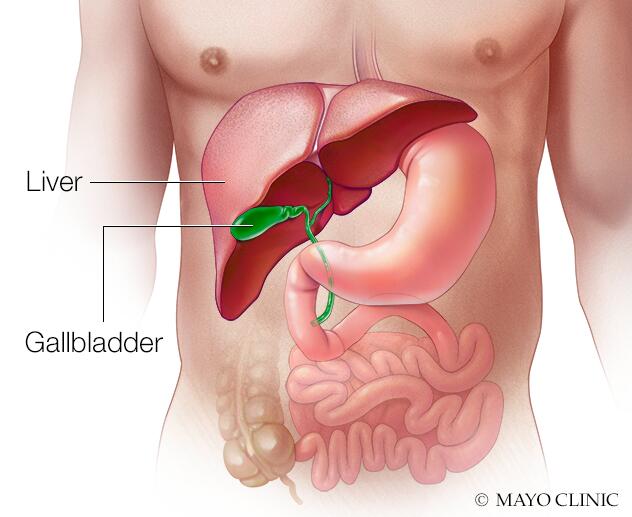Overview
A liver hemangioma (he-man-jee-O-muh) is a noncancerous mass in the liver made up of a tangle of blood vessels. Liver hemangiomas are sometimes called hepatic hemangiomas or cavernous hemangiomas.
Most liver hemangiomas are found during a test done for another condition. These liver masses are common. Around 20% of the population is thought to have them. People who have a liver hemangioma rarely have symptoms and typically don't need treatment.
It may worry you to know that you have a mass in your liver, even if it's not cancerous. However, there's no evidence that an untreated liver hemangioma can lead to liver cancer.

Liver hemangioma
A liver hemangioma is a noncancerous mass in the liver. A liver hemangioma is made up of a tangle of blood vessels.
Symptoms
In most cases, a liver hemangioma doesn't cause any symptoms. When it does cause symptoms, they may include:
- Pain in the upper right belly area.
- Feeling full after eating only a small amount of food.
- Nausea.
- Vomiting.
However, these symptoms are typically due to something else.
When to see a doctor
Make an appointment with your healthcare team if you have any ongoing symptoms that worry you.

The liver
The liver is your largest internal organ. About the size of a football, it's located mainly in the upper right portion of your abdomen — beneath the diaphragm and above your stomach. A small portion extends into the upper left quadrant.
Causes
It's not clear what causes a liver hemangioma to form. Healthcare professionals believe that liver hemangiomas are present at birth, also known as congenital.
A liver hemangioma usually grows as a single collection of tangled blood vessels and is typically less than about 1.5 inches (about 4 centimeters) wide. Sometimes liver hemangiomas can be larger or happen in multiples. Large hemangiomas can grow in young children, but this is rare.
In most people, liver hemangiomas do not grow or cause any symptoms. But in a small number of people, liver hemangiomas grow to cause symptoms and require treatment. It's not clear why this happens.
Risk factors
Factors that can increase the risk of a liver hemangioma include:
- Age. A liver hemangioma can be diagnosed at any age, but it's most often diagnosed in people ages 30 to 50.
- Being female. Women are more likely to be diagnosed with a liver hemangioma than are men.
- Pregnancy. Women who have been pregnant are more likely to develop a liver hemangioma than are women who have never been pregnant. It's believed the hormone estrogen, which rises during pregnancy, may play a role in liver hemangioma growth.
- Hormone replacement therapy. Women who use hormone replacement therapy for menopausal symptoms may be more likely to develop a liver hemangioma than are women who do not.
Complications
Women who have been diagnosed with liver hemangiomas have a higher risk of complications if they become pregnant. The hormone estrogen, which increases during pregnancy, is believed to cause some liver hemangiomas to grow larger.
Very rarely, a growing hemangioma can cause symptoms that may require treatment. Symptoms may include pain in the upper right corner of the belly area, stomach bloating or nausea. Having a liver hemangioma doesn't mean you can't become pregnant. However, talking about the possible complications with your healthcare team can help you make a more informed choice.